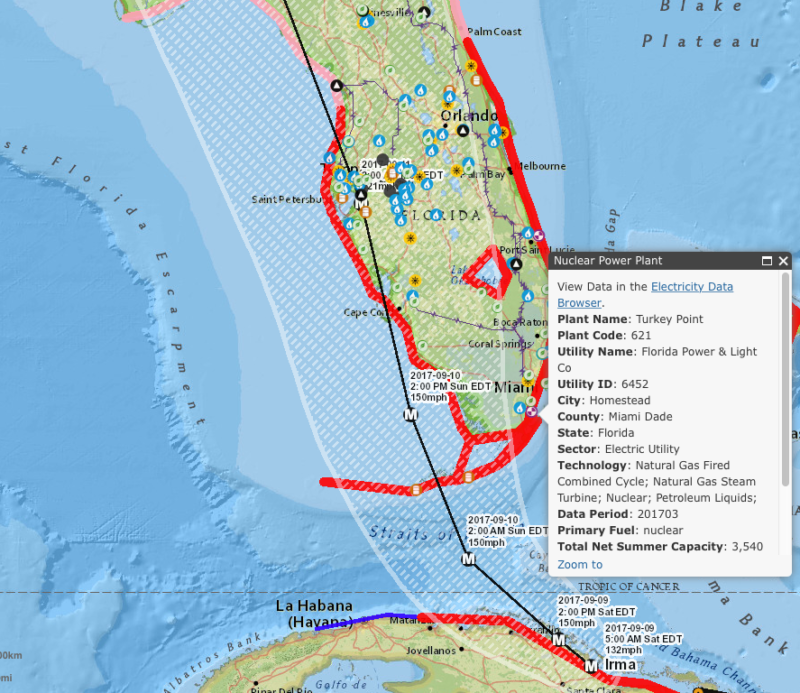As Irma approaches nuclear plants in Florida, lessons from Andrew resonate

Enlarge / The Energy Information Administration’s “Energy Disruption’s Map” as of Saturday morning. You can check out the interactive map at www.eia.gov/special/disruptions. (credit: Energy Information Administration)
In advance of Hurricane Irma, officials from Florida Power and Light (FPL) announced on Thursday that the utility would start shutting down the state’s only two nuclear power plants—Turkey Point, just south of Miami, and St. Lucie, north of West Palm Beach—as a safety measure.
The Turkey Point plant seems to be closest to the hurricane’s probable path according to the latest models. It has two reactors, each capable of 693 megawatts of output while operational. The plant was built in 1972, so Irma won’t be its first Category 5 hurricane. In 1992, the eye of Hurricane Andrew passed right over Turkey Point.
At the time, Turkey Point didn’t sustain any structural damage to its most sensitive facilities, despite facing sustained winds up to 145 miles per hour and gusts as strong as 175mph. The Miami Herald writes that Turkey Point’s nuclear reactors “are encased in six feet of steel-reinforced concrete and sit 20 feet above sea level.” According to a Nuclear Regulatory Commission (NRC) report published in 1993, damage to the “safety-related systems” at Turkey Point during Hurricane Andrew was limited to “minor water intrusion and some damage to insulation and paint.” No radioactive release occurred, either.
Read 10 remaining paragraphs | Comments